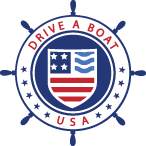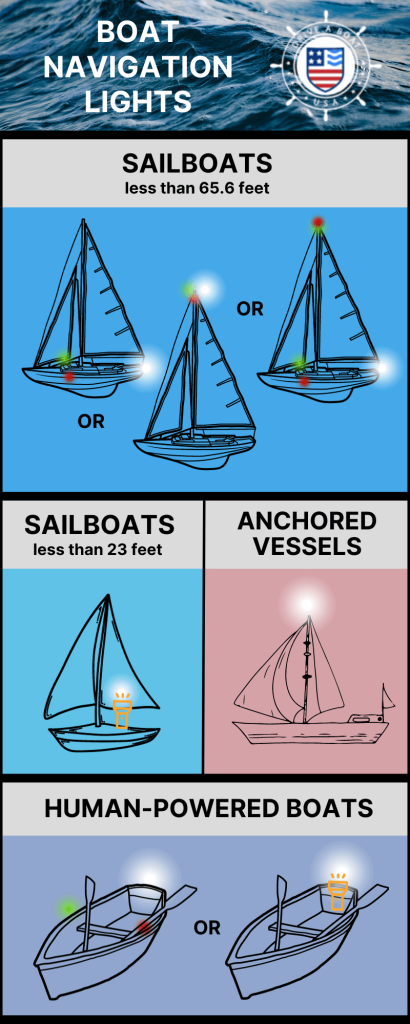Navigation Lights for Sailboats and Human-Powered Vessels
Navigation lights are an important element of boating safety equipment for all boats, including sailboats and human-powered vessels. If you are operating a sailboat or nonpowered boat such as a canoe, kayak or rowboat, you need to know when to use navigation lights. You also need to be aware of the correct configuration of navigation lights for your boat size and boating circumstances.
Sailboat definition
A sailboat is any boat with sails as its principle mode of propulsion. Types and models of sailboat include, among others:
- Schooner
- Catamaran
- Sloop
- Dinghy
- Cutter
- Yacht
- Daysailer
Human-powered watercraft definition
A human-powered watercraft is a boat that is propelled by human power through the use of hand and feet, oars, paddles, poles or pedals, but not sails or an engine. Examples of human-powered watercraft:
- Paddleboards
- Watercycles
- Canoes
- Kayaks
- Rowboats
- Rowing shells
Boat navigation lights: general
You are legally responsible for displaying the right type of navigation lights when your boat is away from the dock. There are several things to consider when figuring out which lights you need to have on board:
- The length of your boat
- The speed of your boat
- Where you are boating (inland, international waters, etc.)
- Whether you are at anchor.
Remember that your navigation lights must be visible and easily identifiable at all times. Other lights on your boat should be easily differentiated from your navigation lights, and should never block your navigation lights.
Human-powered vessels with engines
Some human-powered vessels or sailboats, such as motorsailors, may also have an engine on board. As soon as that engine is in use, your boat immediately becomes bound by the laws governing navigation lights for powered boats.
Navigation lights for human-powered vessels and sailboats
For comprehensive detailed instructions on navigation lights it is advisable to refer to the laws outlined by the United States Coast Guard. In general, sailboats and human-powered vessels require the following basic navigation lights:
Sailboats or vessels using paddles or oars, under 23 feet in length:
- One white navigation light (or lantern or flashlight) that is visible from 2 nautical miles away between sunset and sunrise or during periods of low visibility. In the presence of other vessels, this light must be displayed in time to avoid a collision.
Sailboats between 23 and 65.6 feet:
- One white stern light visible at 135 degrees and from 2 nautical miles away.
- One green starboard and one red port sidelight, visible across 112.5 degrees from one nautical mile away.
OR
- A tricolour light, which is a single all-around light which includes the three coloured of lights indicated above, facing the same directions, visible from a distance of 2 miles. This type of light can only be used when under sail, and never when using a motor regardless of whether the sails are hoisted. It may not be used at the same time as regular sidelights.
Navigation lights for nonpowered boats at anchor
When your boat is anchored at a dock, you do not need to use your navigation lights. However, if you are at anchor away from the dock, you need to inform other boats that you are not moving. To do this, you can display an all-around white light somewhere on your boat where it will be easily visible to any other boats in the area.
Interpreting navigation lights
Installing and using the right navigation lights on your boat is essential, but you also need to be able to interpret the navigation lights on other boats.
Remember, the boat captain remains fully responsible for doing everything possible to avoid collisions at all times, and for using all safety equipment correctly, from navigation lights to boat fire extinguishers and inflatable PFDs.
Learn about boat navigation lights with Drive a Boat USA
You can trust Drive a Boat USA to teach you how to take to the water in complete safety, including the correct use of boat navigation lights, through our premium boating safety course. Sign up today to earn your very own official state-approved boating license!


